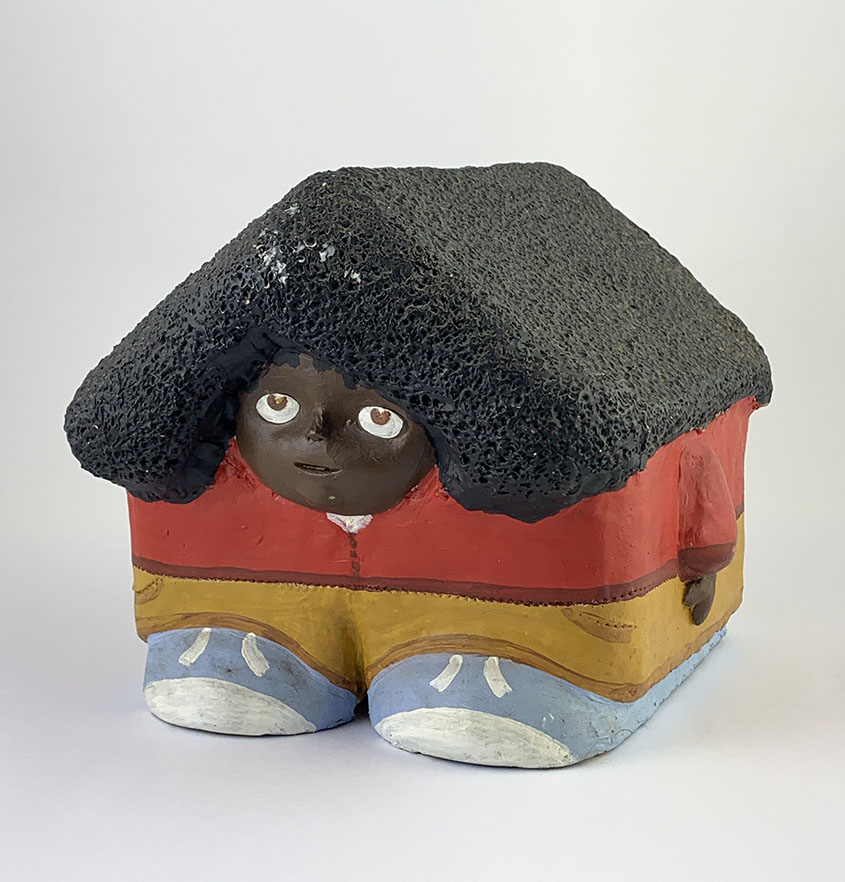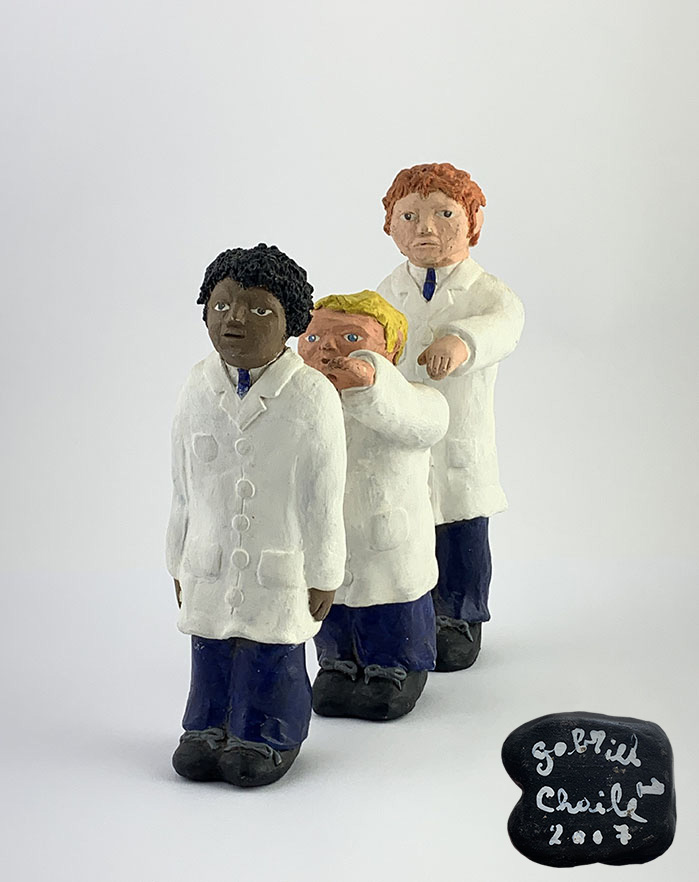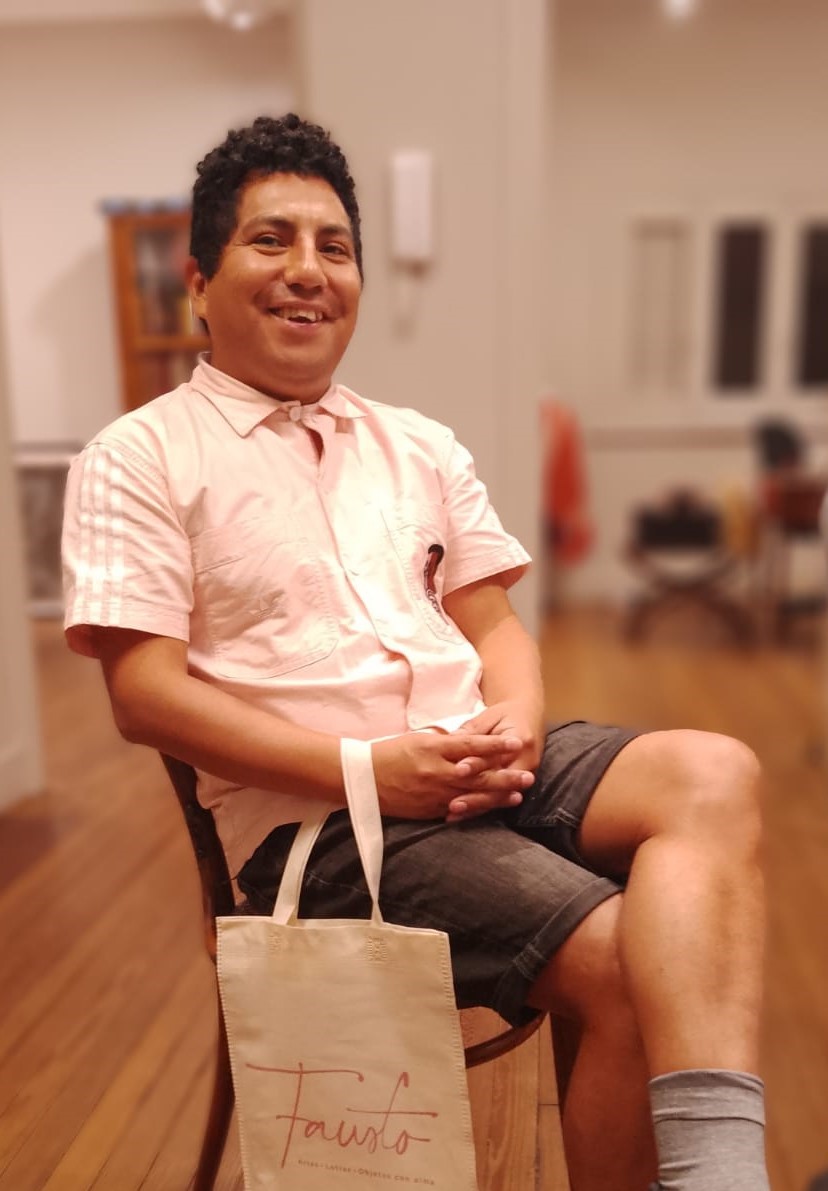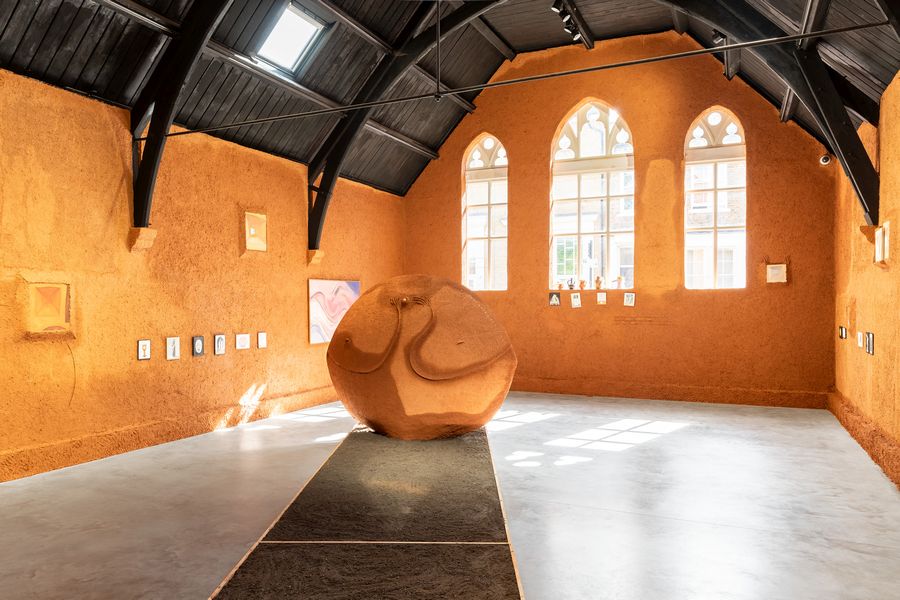Having before our eyes some early pieces by Gabriel Chaile (Tucumán, 1985) allows us to observe the evolutionary arc - a word misapplied to art - in the production of one of the most recognized current Argentine artists.
Although young, Chaile has already developed an important career in our country and abroad. He studied a Bachelor of Fine Arts at the National University of Tucumán and in 2009 he traveled to Buenos Aires thanks to a scholarship from the YPF Foundation that allowed him to be part of the first Artists Program at the Torcuato Di Tella University. A year later he was selected to participate in the Lipac program at the Ricardo Rojas Cultural Center. And his recognition in the local environment took off in 2014 with the exhibition Salir del furco a abrar la tierra, delirios de grandeza II held at the National Fund for the Arts and then with his participation in the cycle Beautiful Thursdays of the National Museum of Fine Arts , where the baroque art room intervened. Exhibitions followed at the Recoleta cultural centers in Buenos Aires and San Pablo T in Tucumán, at the Museum of Modern Art in Buenos Aires, in the Ruby and Barro galleries in Buenos Aires, and at international fairs such as BienalSur (EAC, Montevideo, 2019 ), at the Faena Festival (Miami Beach) and the consecrated participation in the 59th Venice Biennale, delayed by COVID to 2022, with its exhibition The milk of dreams. Without a doubt, he is one of the Argentine artists with the greatest international projection today.
In these exhibitions he has displayed paintings, installations and photographs, although in his consolidation the large adobe sculptures stand out, inspired by the archaeological ceramics of northern Argentina, coming from cultures such as Candelaria, Aguada, Cóndor Huasi, Tafí and Santa María. Not only has he permeated the poetics and image of those American cultures, so archaic but current in his projection, but also the objects in which they are displayed. Like those, Chaile makes ceremonial containers, wind instruments, kitchen utensils and large ovens; He thus rescues his roots. The ancestral ones, his family comes from Trancas and Tafí del Valle, in Tucumán, and Santa María, in Catamarca, and the recent ones, his father was a bricklayer, and his mother made buns that Gabriel sold with his brothers. . As an anthropologist-poet, he recovers the rounded and anthropomorphic urns of the Candelaria Culture, while paying tribute to his loved ones. For example, the large sculptures that make up the Milk of Dreams installation at the Venice Biennale bear the names of family members and surround the largest piece, Rosario Liendo, Gabriel's maternal grandmother. There is tenderness, depth and humor in his work.
The milk of dreams at the Venice Biennale 2022. In the center, the sculpture "Rosario Liendro", surrounded by four others: Irene Duran, Pedro Chaile, Sabastiana Martínez and Jose Pascual Chaile, parents and paternal grandparents of the artist. Photo: Jean-Pierre Dalbéra.
It's not my fault if the river comes
In 2015, Chaile exhibited the installation It's not my fault if the river comes at the Recoleta Cultural Center. There we saw the dirt scattered on the floor of the room, like the mud brought by the river. That exhibition turned out to be prophetic, the clay of the immense sculptures was no longer enough. This happened a few months ago in London, at Studio Voltaire. In collaboration with the artist Laura Ojeda Bär they presented Usos ycustoms, and there the mud covered everything. The large vaulted wooden room with its walls covered in light brown mud evoked the historic churches and houses of our Andean northwest, built of adobe and clay bricks. Within this intervened space, small vessels, paintings, and in the center and at the same time on dry earth, one of his large anthropomorphic figures. Chaile commented that “This commission represents a significant development in my artistic practice and reaffirms my commitment to the creation of ritual, sacred and collective spaces. Through the use of adobe and the incorporation of anthropomorphic iconography, I hope to offer a unique experience that invites the public to reflect on history and traditions that have been forgotten or denied. He brought four tons of adobe from Portugal, the country where he has lived since the COVID pandemic "caught" him. It's not my fault if the river comes...
In February of this year he was once again a figure on the London art scene. His sculpture Homer was one of six finalists, chosen by the National Gallery to be exhibited in Trafalgar Square, a square in central London built to commemorate the Battle of Trafalgar, in which the British army defeated its French and Spanish counterparts. in front of that cape. On the classic white pedestal, or rather, on the edge, Chaile built, like our South American ovenbird bird, a circular clay form. Subtle irreverence from our baker in London, at a rich social, historical, political and anthropological intersection.
Gabriel Chaile in front of his model for Trafalgar Square.
The young people forgot his songs or Tierra del Fuego
Chaile is currently exhibiting at the ChertLüdde gallery in Berlin the exhibition The young people forgot his songs or Tierra del Fuego. Again, his material, adobe. Now draw on this surface. Placed in front of a large wall in the gallery, his strokes form a bas-relief in which the tapir is the protagonist. Chaile presents the premiere of an imagined film; conceived under the same title as the exhibition, it is a film that exists only in ideas. Where otherwise there would be a screen, the public is placed in front of a three-dimensional fresco fixed in time - he calls it Selva tucumana -; neither projection nor moving image, the film is “animated” through an adobe relief flanked by two iron sculptures that break the fourth wall. Collects the relationships between humans and tapirs. Merged with the story of the resilient tapir - included in the red list of threatened species - the adobe used by the Tucumán artist can speak more broadly of preservation. The exhibition can be visited until August 24.
Tucumán Jungle, 2024; Adobe, wood, metal structure, charcoal, two metal sculptures, audio. Audio: reading by Andrei Fernández of The Young People Forgot Their Songs or Tierra de Fuego, a film by Gabriel Chaile; 400 × 930 × 3cm. ChertLüdde, Berlin. Photography: Marjorie Brunet Plaza.
The origins
Let's go back to the pieces that were mentioned at the beginning. Every artist has an early stage which, even distant from what will be his mature art, already prefigures the creator. When he made these pieces at the age of twenty, he was in search of his own poetics with which he dazzles us today. However, the anthropological criticism, the observation of the intersection of races and cultures that occurs in our lands, the American roots, the humble family life and even the humor, characteristics in his mature works, are manifested early in this scene. sculptural.
Three small figures made of epoxy and polychrome with acrylic represent children dressed in white overalls, they are schoolchildren. The group is called Aligned, and was made, as we read based on one of the figures, in 2007. Different heights, physiognomies and skin colors manifest the founding melting pot of our American and Argentine identity. The idea of the school narrative, related to one's own identity, was developed the following year in Little Great Characters (the sailboat, the lamplighter, the grenadier, the realist, the knight), a photo-performance from 2008 in which Chaile himself He poses like a schoolboy dressed like historical figures, with cardboard costumes and a painted face.
A fourth figure, independent of the previous set but at the same time complementary, again represents a child. It is Chaile himself, stylized in a geometric shape. Its cubic body and its prism-like structure evoke the shape of a house. In this piece, Chaile's vector idea of the geometrization of the human figure begins to be outlined, which years later will conclude in the large clay sculptures, volumetric anthropomorphic figures of Indo-American inspiration.
To conclude, where to see a Chaile live, in the city of Buenos Aires? We invite you to be surprised by one of his mother-ovens, Mama Luchona, a work of more than four meters high that he made in 2021 for the Fifth New Museum Triennial in New York, and which currently adorns the entrance hall of Arthaus . Created as the mother of all his previous sculptures, it is based on a form found in the ceramics of the Condorhuasi culture (c. 400 BC - 700 AD, Catamarca, Argentina), which the artist has long admired and describes as “between two states, as if they were about to become something else.” The title comes from an expression used in different regions of Latin America both to refer to single mothers who strive to take care of their children and, pejoratively, to young mothers who do not give up their right to pleasures and parties. This mother is covered in chicken eggs, symbols of life and fertility, while she is an oven. Mother who gives life and nourishes. Arthaus is a cultural center located at Bartolomé Mitre 434, Microcenter of the city of Buenos Aires.
Fighting Mom (2021). Clay, metal frame, eggs, bricks and pigments. 415 x 156 x 283 cm. Newly installed in the Arthaus hall. Note the adobe still fresh, the joints and repairs necessary after transporting the work from New York. Photography: Arthaus.



